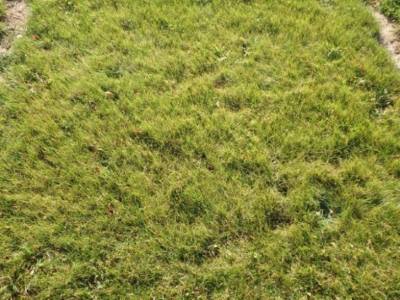By Tiffany Mayer
Michael Brownbridge has great respect for the lowly lawn.
For starters, grass has remarkable survival skills. During droughts, those brown blades that look dead have simply gone dormant until the next generous rainfall returns them to resplendent green.
Lawns kick out moisture on hot days which cools urban environments. They also act like sponges that hold moisture after heavy rains and release it slowly to benefit trees and other plants growing nearby.
Then there are all the pollutants grass traps.
“It’s one of the most phenomenal plants on the planet,” Brownbridge said.

Michael Brownbridge
But all the greats have their foils. That includes the hairy chinch bug and European chafer (white grub) for grass.
Fortunately, Brownbridge, the research director of horticultural production systems at Vineland Research and Innovation Centre, has come up with ways to keep the grass greener — and pest-free — on all sides of the fence.
The roots of his research go back seven years to the advent of the provincial cosmetic pesticide ban and the turf industry’s search for alternative pest management products.
Brownbridge was able to determine that new, non-toxic tools, such as nematodes and biocontrols, worked but not necessarily at the level industry needed to keep grass in peak form. So he started investigating grass varieties that could better stand up to pests and our changing environment.
Brownbridge found new fescues and ryegrasses that have root systems that access moisture and nutrients in soil more efficiently, and require less water to thrive, yet still look as good as traditional Kentucky bluegrass.
Better still, some new varieties contain microbes called endophytes that produce waste that’s toxic or unpalatable to the hairy chinch and white grub. The endophytes also make grass more robust during times of stress, like drought.

The grasses don’t have to be perfect at fending off pests, either, he noted. They just have to reduce infestations and let existing pest management practices take care of the rest; for example, Brownbridge and his team found applying certain species of nematode in early fall rather than spring cut white grub infestations by in half.
Vineland is currently testing these new grass varieties at sod farms in Hamilton and Wainfleet. Lawns — even existing ones — can also be seeded with these new quick-growing varieties.
“We reckon if you have 20 per cent-plus of these grasses in your lawn, you’ll get some of these insect deterrents,” he said.
The greatest benefit of Brownbridge’s research isn’t a verdant yard, however. It’s turf that requires fewer inputs, making it more sustainable.
“It’s a living, breathing, functioning piece of the environment that if we take a bit of a different look at it and maintain it in the right way — and I’m not saying we need a lot of inputs — it can become an important part of our environment,” he said.
Source : Aginnovation ontario